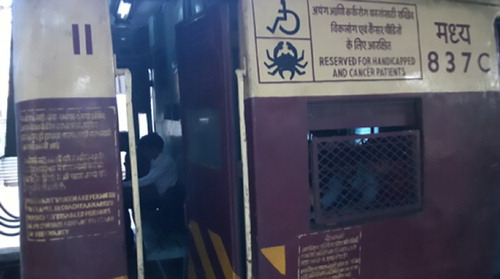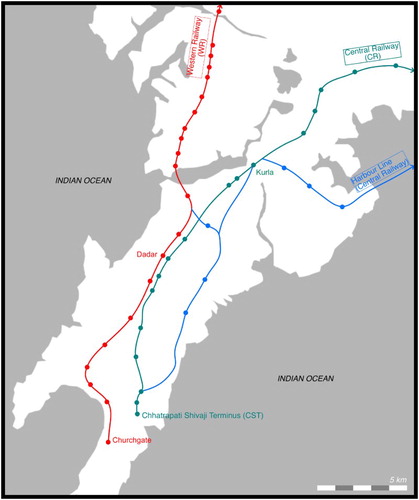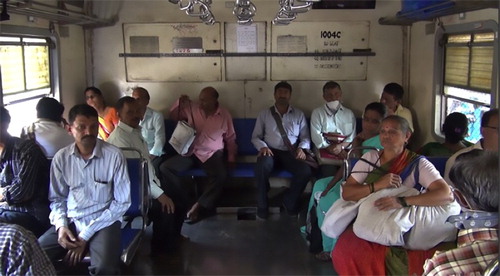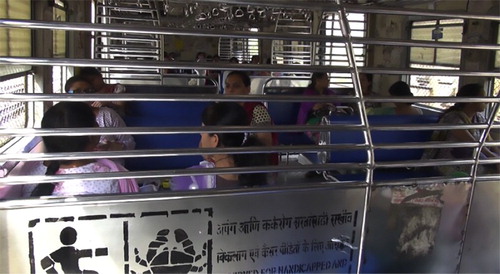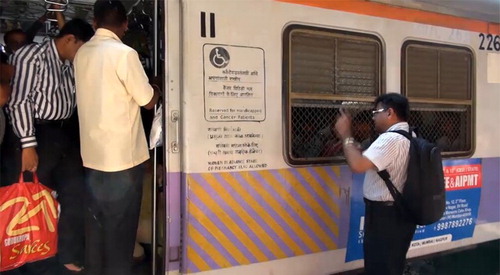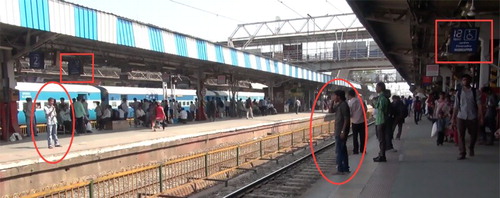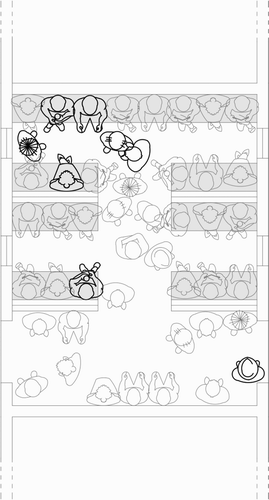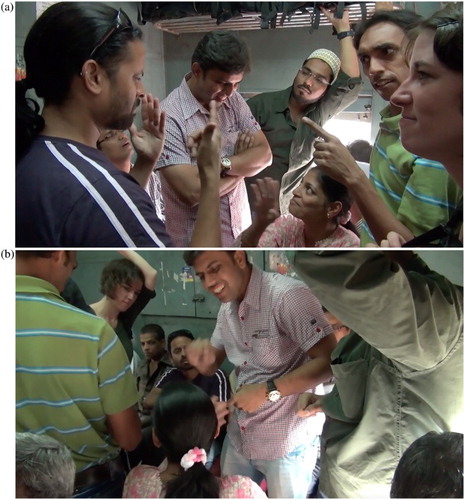Figures & data
Figure 2. The order of compartments in a 12-car maroon old (as opposed to white-purple new) train in Mumbai.

Figure 4. Sign “Reserved for handicapped and cancer patients” on side of the train next to the door of the HC of an older small “HC”.
